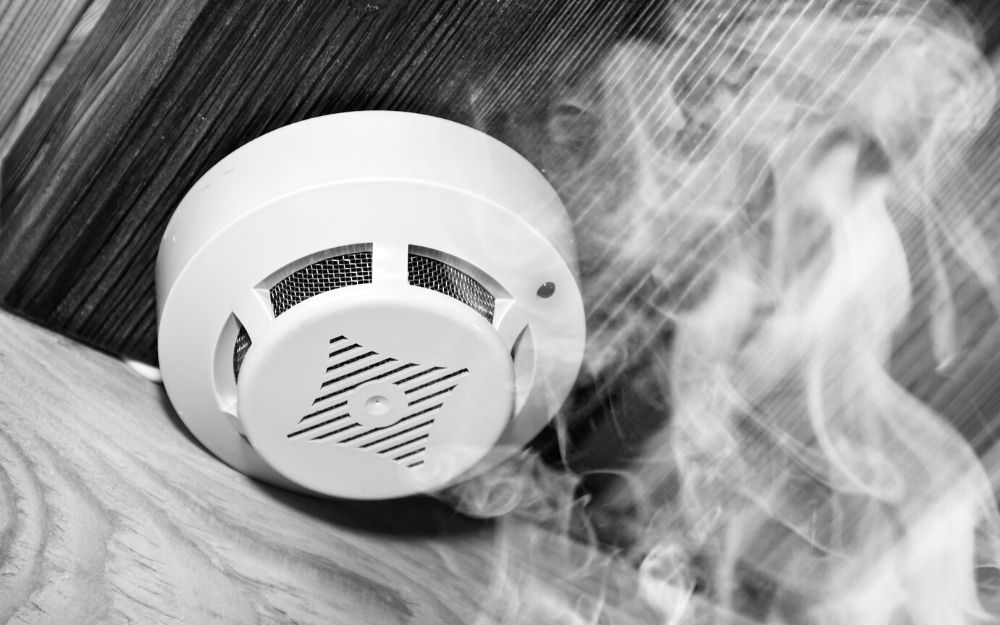
Smoke alarms are one of the most essential safety devices in any home, yet many people don’t fully understand how they work. What exactly does your smoke alarm detect, and why does it sometimes go off even when there’s no fire? Understanding the science behind smoke and smoke alarms can help you make informed decisions about home safety and fire prevention.
The Composition of Smoke
When a fire burns, it produces a complex mixture of gases, tiny solid particles, and liquid droplets. The specific composition depends on the materials burning, but in general, smoke contains:
- Carbon monoxide (CO) – A highly toxic gas that can be deadly in high concentrations.
- Carbon dioxide (CO₂) – A natural byproduct of combustion that can displace oxygen in enclosed spaces.
- Particulate matter – Tiny solid particles (soot) that can irritate the lungs and reduce visibility.
- Water vapor and other gases – Depending on what’s burning, smoke may contain sulfur dioxide, nitrogen oxides, and other harmful compounds.
How Smoke Alarms Detect Smoke
Smoke alarms use one of two main types of technology to detect smoke: ionization and photoelectric sensors. Some modern alarms use a combination of both for greater effectiveness.
Ionization Smoke Alarms
These alarms contain a small amount of radioactive material that ionizes the air between two electrical plates, creating a small electrical current. When smoke enters the chamber, it disrupts the ionization process, reducing the current and triggering the alarm. Ionization alarms are more sensitive to fast-burning, high-flame fires, such as those caused by flammable liquids or paper. However, they can sometimes be triggered by cooking smoke or steam.
Photoelectric Smoke Alarms
These alarms use a light beam and a light sensor. When smoke particles enter the chamber, they scatter the light beam, causing some of it to hit the sensor and activate the alarm. Photoelectric alarms are more effective at detecting slow, smoldering fires, such as those that start in furniture or electrical wiring. They are less prone to false alarms from cooking or steam.
Why Does Your Alarm Go Off Without a Fire?
Smoke alarms can sometimes be triggered by non-fire-related causes, such as:
- Cooking smoke – Frying, baking, or grilling can produce enough smoke to set off an alarm, especially an ionization-type.
- Steam and humidity – High moisture levels can interfere with the sensor in a way similar to smoke.
- Dust and dirt buildup – Over time, dust can accumulate in the sensor chamber, leading to false alarms.
- Insects – Small bugs can crawl into the alarm and trigger it.
- Low battery warning – Some alarms emit chirping sounds when the battery needs to be replaced, which can be confused with an actual alert.
How to Ensure Optimal Smoke Alarm Performance
To keep your smoke alarms working effectively:
- Test them monthly by pressing the test button.
- Vacuum or clean them regularly to remove dust and debris.
- Replace batteries annually (or as directed by the manufacturer).
- Install both ionization and photoelectric alarms for full protection.
- Replace the entire unit every 10 years, as sensors degrade over time.
Conclusion
Smoke alarms are vital for home safety, but understanding how they work can make them even more effective. By knowing the difference between ionisation and photoelectric alarms, recognising false alarm triggers, and maintaining your alarms properly, you can ensure your home is well-protected. Investing in the right smoke alarms and keeping them in top shape could mean the difference between life and death in the event of a fire.
Glasshouse Home Safety Smoke Alarms: Your Partner in Compliance
Glasshouse Home Safety Smoke Alarms, with their expertise in smoke alarm installations and testing, are well-equipped to assist homeowners in navigating these regulatory changes. By staying up-to-date with the latest requirements, they ensure that the homes of their clients in Queensland are equipped with effective and compliant smoke alarm systems.
If you have any questions or require additional information regarding the recent amendments to the wiring rules and the implications for smoke alarm installations and testing, do not hesitate to contact Glasshouse Home Safety Smoke Alarms at 1300 856 263. We are committed to providing reliable and professional services to enhance home safety in Queensland.





